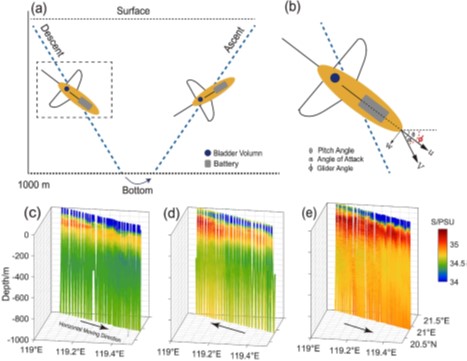Yanwei Zhanga, Weihan Ruana, Danni Lyua, Jiancheng Yub
aState Key Laboratory of Marine Geology, Tongji University, Shanghai 200092, China
bShenyang Institute of Automation, Chinese Academy of Sciences, Shenyang 110169, China
Abstract:Double-diffusive convection (DDC) is a critical driving mechanism for diapycnal mixing in the ocean. However, there is limited quantitative investigation on the impacts of dynamic ocean-atmospheric processes, such as the interaction between tropical cyclones and mesoscale eddies, on DDC generation. In this study, we analyzed the cyclone-eddy induced DDC based on measurements obtained by an underwater glider in the northern South China Sea, where is frequently impacted by tropical cyclones and eddies. We observed abnormally increased salinity and a notable upwelling resulting from cyclone-eddy interaction. Our observations further reveal the coexistence of detached salt fingers (SF) and shear-driven turbulence. Strengthened salt finger dominates DDC with SF-driven salinity diapycnal diffusivity (10−4 m2 s−1) in the deepened halocline, which is an order of magnitude higher than background values. Shear-driven turbulence, characterized by large density overturns below 600 m, is generated due to enhanced geostrophic shear around the eddy. Further investigation indicates that SF thermohaline staircases evolve from lateral saline fronts driven by Ekman-pumping-induced upwelling and Kuroshio intrusion. The convective structure generates strong diapycnal mixing and vertical/lateral salinity fluxes that are urgently needed to be incorporated into estimations of ocean energy/material balance and ocean modeling.



